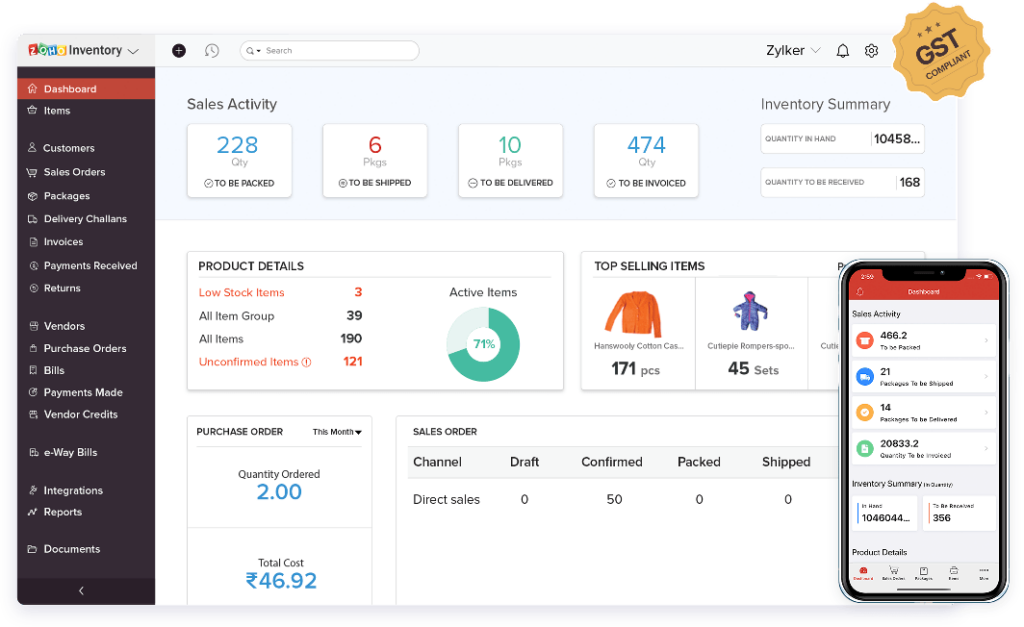
Specifically, what are the most important objectives for your company? Gaining new customers is crucial for the success of any online business. A lot of front- and back-end adjustments to your online shop are typically necessary to increase customer acquisition.
But once you’ve found dependable WooCommerce hosting and built a terrific WooCommerce store where customers can shop with confidence and have a positive experience, what comes next?
Customer retention is only the beginning for thriving firms. The company’s goal is to ensure happy consumers long after they’ve made a transaction. After a customer makes a purchase on your website, your responsibility does not end there.
After all, how a customer feels after making a purchase can have a significant impact on their loyalty to your company and brand. And their emotions will probably influence if they come back to your store to make additional purchases or suggest your brand to their friends and family.
A poll conducted by Emplify in 2022 confirmed these findings, reporting that 63% of respondents had abandoned a brand because of a negative experience.
How important it is to have a good experience in their post-purchase
Brain & Company says that keeping 5% of customers leads to a 25% rise in business revenue. That means that customers you already have give you a better return on your money than customers you have to find.
It’s not just about getting customers to buy from you again and again. Loyal customers often become brand ambassadors and bring in more money through their friends and family. Overall, when things go well after a purchase, the brand’s reputation and sales go up.
In a market with lots of competition, it’s not easy to keep customers coming back. So, it’s not enough to just know what the customer wants. You should try to give them a good experience at every step of their customer journey.
The Way of the Customer

To get new customers, it’s important to understand the customer’s journey.
When you know how your customers get from point A to point B, you can improve your marketing and sales efforts at each step. Let’s look at the main steps a customer goes through.
1. Awareness
At this stage, customers realize they have a problem to solve or an opportunity to pursue. The customer knows that they need to buy something to meet their need, but they don’t know what they could buy.
The customer starts to find out how other people have dealt with this problem. They could ask their friends for suggestions or look on the Internet.
2. Consideration
At this stage, the customer already knows what they want or need and has thought of several ways to get it. The customer carefully thinks about what’s good and bad about each solution. They will also check to see if each solution is worth the money.
3. Decision
Now, the customer knows what they want or need. During the decision stage, they compare different brands and choose the one that best meets their needs.
Evaluation of the Purchase
When a customer buys something, that’s not the end of their journey. Soon after making a purchase, the customer starts to think about whether or not they made the right choice. They don’t only think about how good the service or product is. They also think about:
- The process of checking out
- Tracking a shipment
- Conversations with customer service reps
- The process of signing up
Based on what they’ve learned, they soon decide what to do with their new purchase. This decision will affect what the customer buys and does with the brand in the future.
What people do after they buy something
Post-purchase behavior describes how customers feel and what they do after they buy something. Along with the quality of the product or service, there are several other things that affect how a customer acts after making a purchase. How true a brand is to what it says and how it treats its customers can affect how customers feel about it.
Positive and negative actions after a purchase
On one end, you have very happy customers who will write glowing reviews and recommend your brand. On the other hand, customers might be sorry that they bought something.
Customers who are very happy with their purchases do things like write positive reviews, buy the product again, and tell their friends about it. Customers who are unhappy with what they bought will do bad things like write bad reviews and switch brands.
To keep more customers and make more money, it’s important to watch and change what your customers do after they buy from you.
How to keep customers loyal after they’ve bought something
A good program for keeping customers comes down to keeping customers in the loyalty loop.
When a customer buys something more than once, they go through the customer loyalty loop. Getting customers to join the loyalty loop is very beneficial for brands because it increases the lifetime value of customers and improves the reputation of the brand.
Customers are more likely to stay loyal if they have a good experience post-purchase. Let’s look at how you can give customers a good experience that makes them do good things after they buy and keeps them in the loyalty loop.
Communication after a sale
Post-purchase communication starts as soon as a customer makes a purchase. Communication that is quick and clear is a big part of making the experience after a purchase a good one.
Most brands talk to their customers post-purchase through emails. For effective communication after a purchase, it’s important to write emails that are personalized and interesting.
There are many different kinds of emails sent post-purchase
Greeting emails
A well-written welcome email is one of the most important ways to get in touch with customers. You need to use the welcome email to get people to like your brand.
This can be done by:
- Use the customer’s name in your welcome email and make it personal.
- Make sure that the welcome email has information that will help the customer.
- Make the customer feel like they belong to your brand.
- Make sure the mail is clear and only asks people to do one thing.
- You might want to make more than one template for a “welcome email” for different types of customers.
Other ways to talk through email
It’s important to have a post-purchase email marketing plan to keep your customers interested. Include the following in your emails to build a group of customers who are loyal and interested:
- Details about special offers and deals.
- Tips on how to get the most out of what they bought.
- A hand-picked list of products that will go well with what they just bought.
- Invites to important events.
- Reminders that come at the right time for refills and subscriptions.
- Emails about the customer experience in general.
You can also use a newsletter builder to make newsletters that are interesting and build relationships with your customers.
Help for Customers After a Purchase
Positive customer relationships will result from proactive customer service.
How customers feel about your brand depends on how good your customer service is. Customers feel like you care about them when you solve their problems and make it easy for them to use your products.
Streamlined support for all channels
Customers like to talk to companies in different ways. So you need to get your help out there through ways like:
- Chat live.
- Video/audio calls.
- Consultations in person.
- Social media.
Having omnichannel support makes it easier for your customers to get in touch with your support team. It also helps streamline support workflows and solve problems quickly, so your support teams can take quick, actionable steps.
Demos and How- To’s
Some customers would rather do things on their own instead of calling customer service. The best way to reach out to this group of customers is through tutorials and how-to guides.
Make sure your guides and tutorials:
- Tailor-made for different customer segments.
- There are different ways to get it, both online and off.
- able to answer questions that are very specific.
- Customer dissonance and bad behavior after a purchase can be avoided by giving great customer service. So, customer support after the sale should be a big part of your plan to keep customers.
Post-Purchase Customer Service
Customers may worry about their choice soon after making their first purchase. They might be more worried if they don’t know what will happen with shipping and don’t know what other options they have.
Customer service should calm these worries by answering questions about:
- What the product is and how to use it.
- Compatibility of products.
- Shipping and package tracking.
- Policy on returns and money back.
Customer service should also help customers send the product back or get a different one if they want to. To make this process easy, the brand should have a clear return policy and an easy way to get your money back.
Options for Customers to Get in Touch
It’s unlikely that machines will ever be able to do everything that people do in customer service. Even though talking to a real person could feel more real, you might want to use AI-based customer service for simple service questions.
Just like your customer service, your customer service should be available through different channels, like:
- Email.
- Phone.
- Social Media.
- Chat live.
A great service after the sale will help new customers connect with your brand and feel good about the decision to buy from you.
After the Sale Loyalty
Customers will be happy if you provide good customer service, communication, and support, but you need a few more things to keep them coming back. Customers who feel like they know a brand will spread the word about it and help it grow.
Businesses often have loyalty programs for customers to build up a group of loyal customers.
But you need to do more than the usual loyalty programs to keep your customers coming back and turn them into brand advocates.
Here’s how it works:
- Build and run a community of customers around your brand.
- Encourage people in your customer community to talk and hang out together.
- Give customers information about your products that they can use.
- Make a brand image that is positive, inclusive, and different.
- Make a unique loyalty program with great deals and rewards.
How Happy Are Customers Post-Purchase?
We’ve talked about ways to make sure customers are happy. Making your customers happy isn’t enough. You should also find out how they feel about your brand.
The best way to find out how happy your customers are is to ask them for feedback. It also makes customers feel like they are important.
But it may not be easy to get customer reviews, and you’ll need a plan for how to ask customers for their feedback. Here are some suggestions on how to ask for reviews:
- Ask for reviews at the right time, especially after a customer has had a good experience.
- Offer omnichannel support and templates to make it very easy for people to leave reviews.
- Ask them for reviews in person or by sending them a note.
Amazon is a great example of a company that gives its customers a wide range of review options. They have made reviews of products an important part of how they do business.
Asking customers for their ideas is another way to find out how happy they are. You must have a way for people to leave suggestions on your website, just like in stores where there are suggestion boxes. Forms are a great way to get feedback from customers.
Final Thoughts
To keep customers, improve the experience after the sale.
When a brand gets new customers, its job isn’t done. The experience after a purchase is important for keeping customers, making more money in the future, and keeping a good name for the brand.
Customers will be more likely to stay loyal and act well post-purchase if you go above and beyond what they expect.
Brands can make a good experience for their customers by:
- Providing great communication after the sale.
- Making customer service and support quick.
- Keeping customers happy after the sale.
- figuring out how happy customers are.
But keep in mind that these customer retention strategies won’t work if they aren’t paired with a good ecommerce platform.





